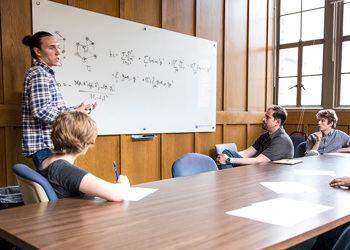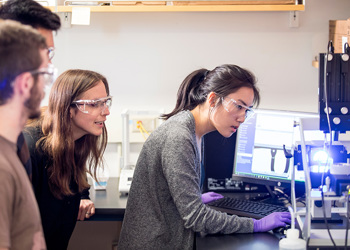Academic Experience

The University of Washington Master of Science in Applied Chemical Science & Technology program is designed to prepare graduates for a range of applied chemistry jobs in research and industry.
Program Format
The program is a full-time, one- or two-year degree.
You can pursue one of two tracks — a one-year, 36-credit non-thesis track, or a two-year, 48-credit thesis track. You must apply for permission to do the thesis track at the end of your first year. Learn more about the thesis.
Classes meet during the day on the main UW campus in Seattle. There are no classes during summer quarter.
Curriculum
The Master of Science in Applied Chemical Science & Technology is a flexible program designed to help you meet your career goals.
Students choose from core courses on topics in like chemical separation techniques, analytical electrochemistry, atomic and molecular spectroscopy, bioinstrumental analysis and analytical mass spectrometry. You also have a choice of seminars and electives. Learn more about courses.
Research

Because students’ career interests vary, and the field of chemical science and technology is evolving so quickly, the program has a significant research component. Students on the non-thesis track spend a third of their time on research; students on the thesis track spend half their time on research.
You’ll pursue your own research as part of a larger research group in a collaborative research environment. You can carry out research in any of these areas: analytical chemistry, bioanalytical chemistry, bioinorganic chemistry, bioorganic chemistry, biophysical chemistry, environmental chemistry, inorganic chemistry, materials chemistry, medicinal chemistry, nuclear chemistry, organic chemistry, organometallic chemistry, physical chemistry, polymer chemistry, process analytical chemistry and theoretical chemistry.
Thesis Track
If you pursue the thesis track, you’ll do an additional three quarters of research, working to apply what you’ve learned to a departmental and/or industry project and writing a thesis. You'll also learn about scientific writing, publishing and presentation under the supervision of a faculty mentor. You must petition for permission to do the thesis track after completing the 36-credit non-thesis track.